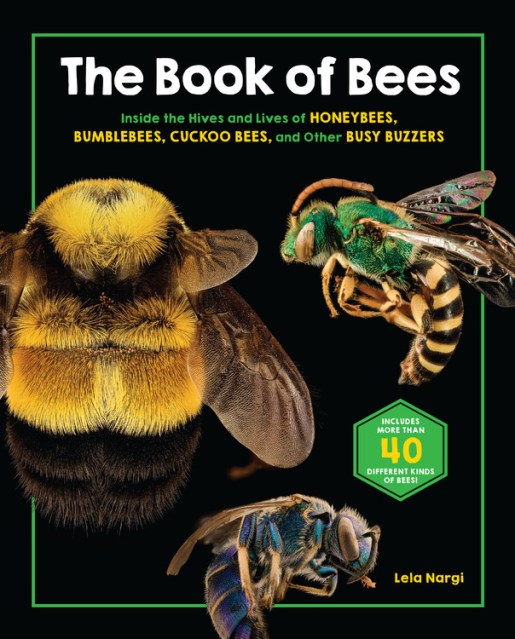The Book of Bees
Inside the Hives and Lives of Honeybees, Bumblebees, Cuckoo Bees, and Other Busy Buzzers
Contributors
By Lela Nargi
Formats and Prices
Price
$19.99Price
$24.99 CADFormat
Format:
- Hardcover $19.99 $24.99 CAD
- ebook $12.99 $16.99 CAD
This item is a preorder. Your payment method will be charged immediately, and the product is expected to ship on or around March 8, 2022. This date is subject to change due to shipping delays beyond our control.
Also available from:
Did you know there are blue bees and green bees? Or that one species of bee nests in snail shells? Or that many bees don’t live in hives? With more than 20,000 species of bees worldwide, there’s more to bees than just honey!
The Book of Bees gives curious kids a close-up view of busy buzzers from around the world. From the familiar Western honeybee to the extra-large Himalayan giant honeybee and Australia’s vibrant neon cuckoo bee, these pages are packed with detailed photos and fascinating facts on more than 50 species of bees. In-depth species profiles help you identify bees, learn about bee-havior, and find your favorites! And special features examine topics like hive life, nest cells, and other pollinators. The world of bees is exciting and surprising—and The Book of Bees will leave you buzzing!
- On Sale
- Mar 8, 2022
- Page Count
- 128 pages
- Publisher
- Black Dog & Leventhal
- ISBN-13
- 9780762478408
Newsletter Signup
By clicking ‘Sign Up,’ I acknowledge that I have read and agree to Hachette Book Group’s Privacy Policy and Terms of Use







